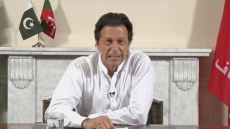In what outlines a growing militarisation in Asia and also China’s rapidly expanding prowess, Beijing is spending more dollars on defence than what India, Japan, Australia and South Korea do collectively.
The expenditure on defence means the annual outlay on modernsation, new equipment, warships, planes and missiles besides running expenses like fuel, repairs and salaries.
Data released on Monday by Swedish think-tank Stockholm International Peace Research Institute (SIPRI), titled ‘Trends in World Military Expenditure, 2018’ says, “China, the world’s second-largest (behind the US) military spender, allocated US $ 250 billion to the military in 2018, which accounted for 14 per cent of all global spending.”
China’s expenditure is much greater than the collective expenditure, $ 182.9 billion, of India ($ 66.5 billion), Japan ($46.6 billion), South Korea ($ 43.1 billion) and Australia ($ 26.7 billion).
India, Japan, Korea and Australia, respectively, are the fourth, ninth, tenth and thirteenth largest spenders on defence in the world.
China’s expansion
The report said, “In 2018, its (China’s) military expenditure rose for the 24th consecutive year, and its spending in 2018 was almost 10 times higher than that in 1994.”
Though the annual rate of growth of China’s military spending has slowed steadily since it reached a post-2009 high of 9.3 per cent in 2013, it has a growth of 5 per cent in 2018, which was the lowest annual increase since 1995.
China had followed a policy of linking growth in military spending with economic growth, said the SIPRI report. “With its (China’s) economic growth slowing in 2018 to the lowest level in 28 years, slower rates of growth in the coming years can be expected if China continues to follow this policy,” the report summarised.
Growing militarisation
SIPRI data says military spending in Asia and Oceania was US $ 507 billion in 2018 and it accounted for 28 per cent of global military spending. “Five of the top 15 global spenders in 2018 are in this region: China (rank 2), India (rank 4), Japan (rank 9), South Korea (rank 10) and Australia (rank 13).”
It is the only region in which the annual growth has been continuous since 1988, and the 46 per cent increase between 2009 and 2018 was by far the largest in any region. “The increase was due primarily to the rise in Chinese spending, which in 2018 accounted for 49 per cent of total spending in the region, compared with 31 per cent in 2009,” the report said.
Existing tensions in Asia
The People’s Liberation Army is 2.3-million strong and Beijing has separate ongoing boundary disputes with Japan and India besides overlapping territorial claims with six other countries in the hydrocarbon-rich South China Sea (SCS). Beijing claims 90 per cent of the 3.5 million sq km of this sea while the Philippines, Indonesia, Vietnam, Malaysia, Brunei and Taiwan claim parts of those waters. The US is keen to have code of conduct in the SCS.
China already has 11,000-km range Inter Continental Ballistic Missiles (ICBMs), the Dongfeng 31, and has tested the submarine-launched ICMB version named Julang 2. It has tested on-deck landing of fighter aircraft on the 65,000-tonne aircraft carrier, the Liaoning, and has a stated goal of building US-style nuclear-powered super carriers of 1 lakh tonne.


